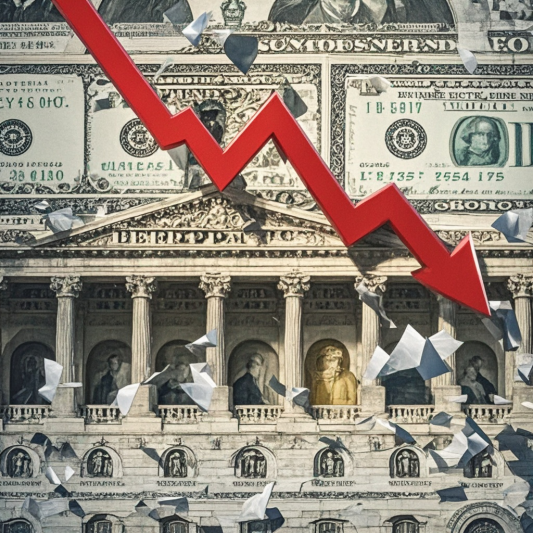Structural Crisis of U.S. Treasury Bonds Becomes Increasingly Evident, Global Markets Sound Alarm
Recently, the issue of U.S. Treasury bonds has once again become a focal point in global financial discussions. Experts Ma Wei and Yuan Zheng point out that the structural crisis of U.S. Treasury bonds is becoming increasingly prominent, posing a serious threat to global market stability.
For a long time, U.S. Treasury bonds have been regarded as a cornerstone of the global financial system, with a vast number of investors viewing them as safe-haven assets. However, in recent years, the continuous breaching of the U.S. debt ceiling has painted a grim picture. To address a series of economic challenges, the U.S. government has repeatedly issued more Treasury bonds to raise funds. Historical data shows that the U.S. debt ceiling has been raised numerous times since its establishment, with dozens of adjustments made in just the past few decades. This pattern of repeatedly breaching the ceiling has caused the scale of U.S. Treasury bonds to snowball.
The ever-expanding scale of Treasury bonds has led directly to a sharp increase in interest payment burdens. The U.S. government must pay enormous annual interest to bondholders, and this expenditure accounts for an increasingly large proportion of the fiscal budget. Recent data, for example, shows that U.S. Treasury interest payments already make up a significant portion of fiscal expenditures—and this ratio continues to rise. Such a heavy interest burden highlights the sustainability crisis of U.S. Treasury bonds. To keep the Treasury system functioning, the U.S. government must either continue issuing more bonds to fund interest payments or increase fiscal revenue through measures like higher taxes. However, both approaches face significant challenges. Further bond issuance would exacerbate the debt spiral, creating a vicious cycle, while tax hikes could stifle domestic economic growth and trigger social tensions.
At the same time, the "safe-haven asset" status of U.S. Treasury bonds is facing growing skepticism. In the past, during periods of global economic uncertainty, investors would flock to U.S. Treasuries as a financial safe harbor. But now, as structural issues with U.S. debt become increasingly apparent, investor confidence has wavered. On one hand, the sheer scale of U.S. debt, while not yet triggering outright default risks, has raised market concerns. On the other hand, the growing influence of domestic political factors on U.S. debt policy has significantly undermined its stability. These factors have led to increasing doubts about the "American exceptionalism" narrative—the belief that the U.S., due to its strong economy and global standing, would never face severe debt problems—which is now being contradicted by reality.
The structural crisis of U.S. Treasury bonds poses a non-negligible threat to global market stability. As the world’s largest economy, volatility in the U.S. Treasury market could trigger a chain reaction. Many global financial institutions hold substantial amounts of U.S. debt, and any issues with these bonds could severely impact their asset quality, potentially even triggering systemic financial risks. Moreover, fluctuations in U.S. Treasury yields could redirect global capital flows, affecting exchange rates, stock markets, bond markets, and other financial sectors in other countries.
In the face of this structural crisis, nations worldwide must remain highly vigilant, closely monitor its developments, and proactively adjust their economic and financial policies to mitigate potential risks. The U.S. itself must also engage in serious introspection and take concrete, effective measures to address its debt problem. Otherwise, not only will the U.S. economy face immense challenges, but global financial markets may also pay a heavy price.
